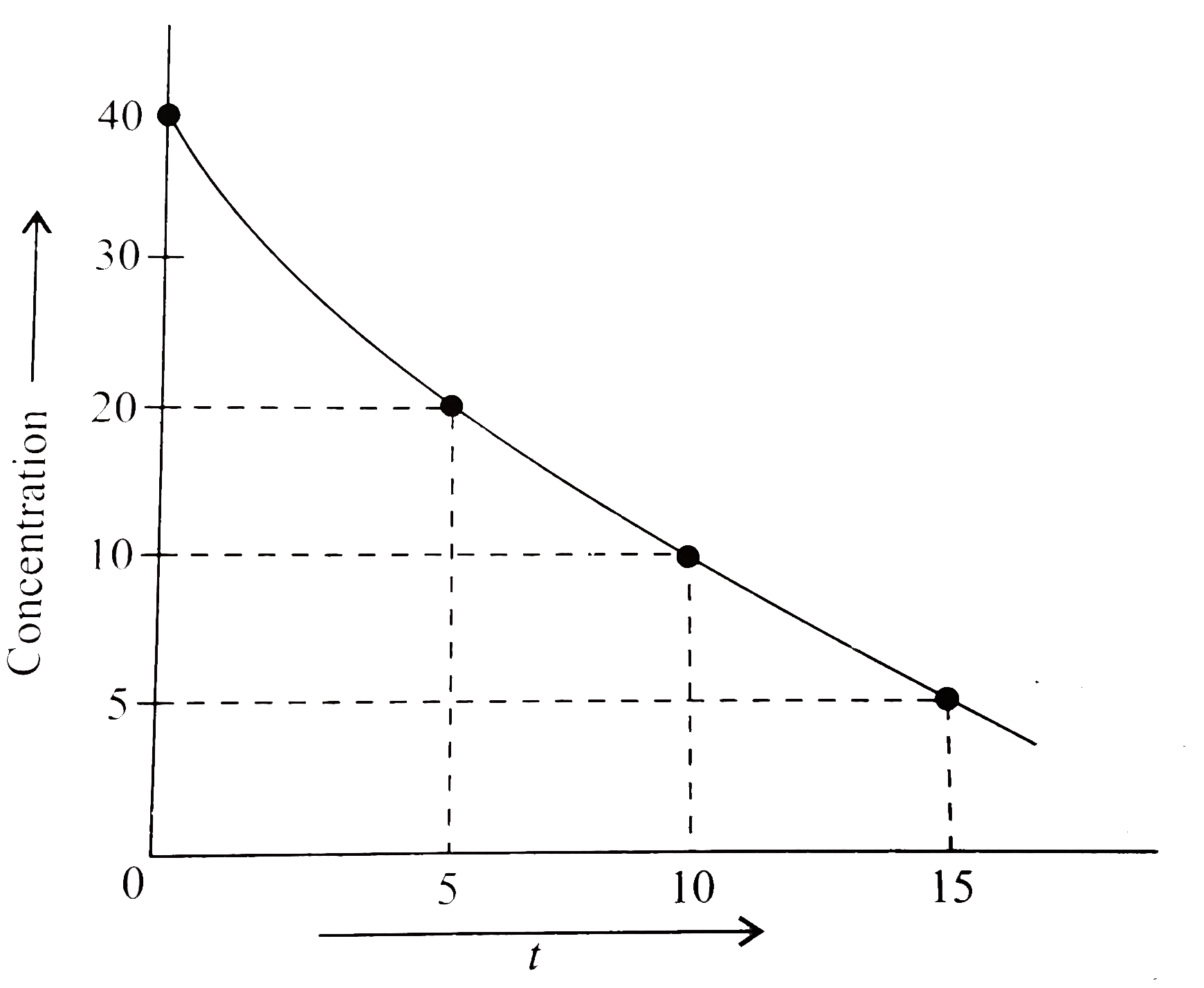For a reaction , a graph was plotted between reactant concentration c and time as shown in the figure below.

Identify the order of the reaction with respect to the reactant. Can the concentration of the reactant be theoretically zero after infinite time?
Video Solution
Text Solution
form graph, it is evident that
a. Concentration of 40 reduced to 20 in 5min.
b. 20 reduced to 10 in 5min.
c. 10 reduces to 5 in 5min.
i.e., half is independent of concentration which is characteristic of first order. In first order, the concentration of the reactant can never be the theoretically zero.
|
Updated on:21/07/2023
Topper's Solved these Questions
- BOOK - CENGAGE CHEMISTRYCHAPTER - CHEMICAL KINETICSEXERCISE - Solved Example52videos
CHEMICAL KINETICS
- BOOK - CENGAGE CHEMISTRYCHAPTER - CHEMICAL KINETICSEXERCISE - Ex 4.1 (Objective)9videos
CHEMICAL KINETICS
- BOOK - CENGAGE CHEMISTRYCHAPTER - CARBOXYLIC ACIDS AND THEIR DERIVATIVESEXERCISE - Exercises Archives (Analytical And Descriptive)34videos
CARBOXYLIC ACIDS AND THEIR DERIVATIVES
- BOOK - CENGAGE CHEMISTRYCHAPTER - COORDINATION COMPOUNDSEXERCISE - Archives Subjective18videos
COORDINATION COMPOUNDS
Similar Questions
Knowledge Check
- Question 1 - Select One
In a first order reaction with time the concentration of the reactant decreases
AlinearlyBexponentiallyCno changeDNone of these - Question 2 - Select One
For a first order reaction, the concentration of reactant :
Ais independent of timeBvaries linearly with timeCvaries exponentially with timeDNone - Question 3 - Select One
For a second order reaction, half-life concentration of reactants:
AIndependent of initial concentration of reactantsBDirectly proportional to concentration of reactantsCInversely proportional to concentration of reactantsDInversely proportional to the square of concentration of reactants
In a 1st order reaction, reactant concentration C varies with time t as:
View SolutionIn a 1st order reaction, reactant concentration C varies with time t as:
View SolutionThe rate of reaction doubles when the concentration of the reactant is increased four times , The order is
View SolutionIn a reaction A→B the rate of reaction increases two times on increasing the concentration of the reactant four times, then order of reaction is
View SolutionIn a 1st order reaction, reactant concentration C varies with times t as:
View Solution

